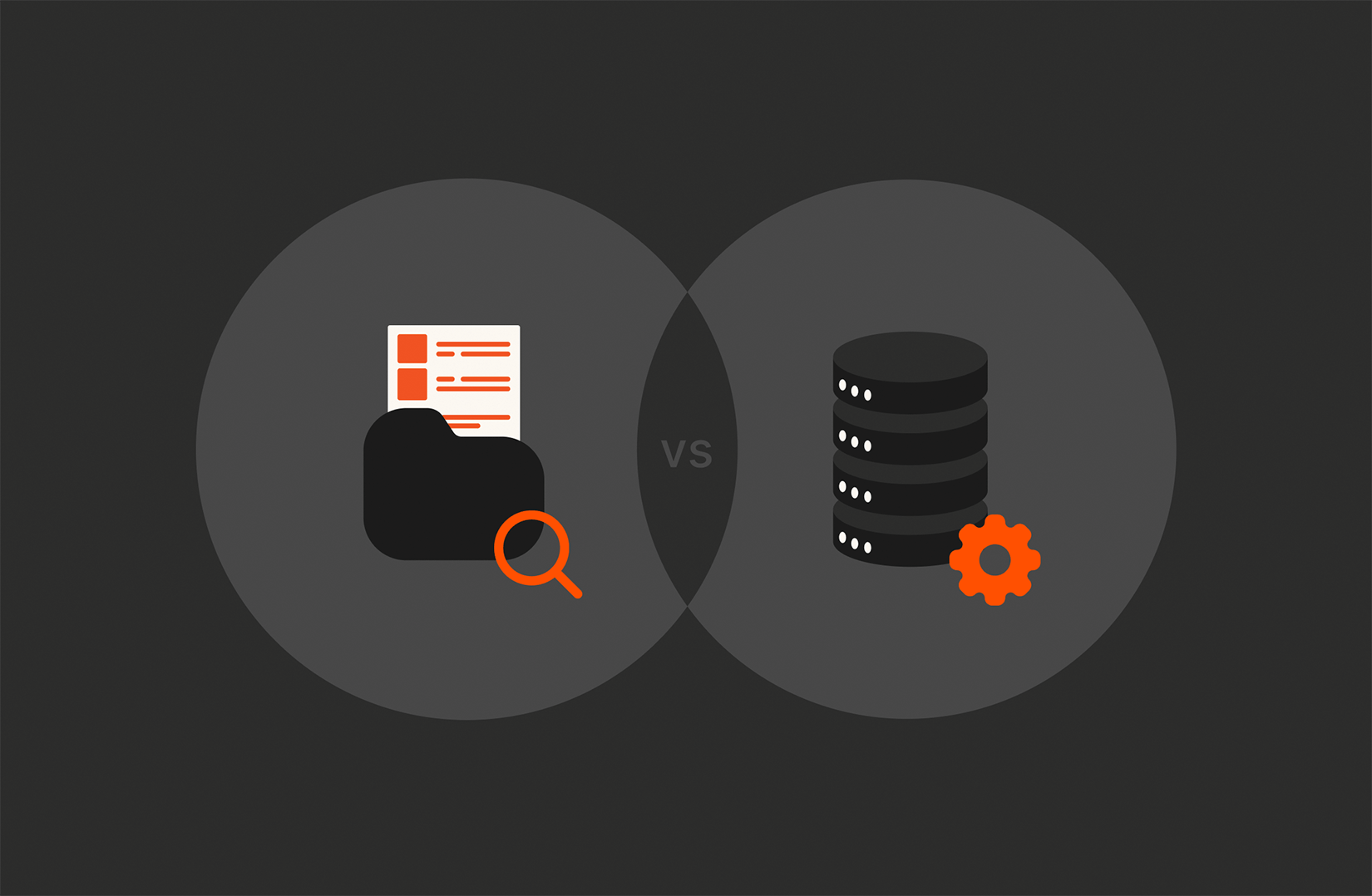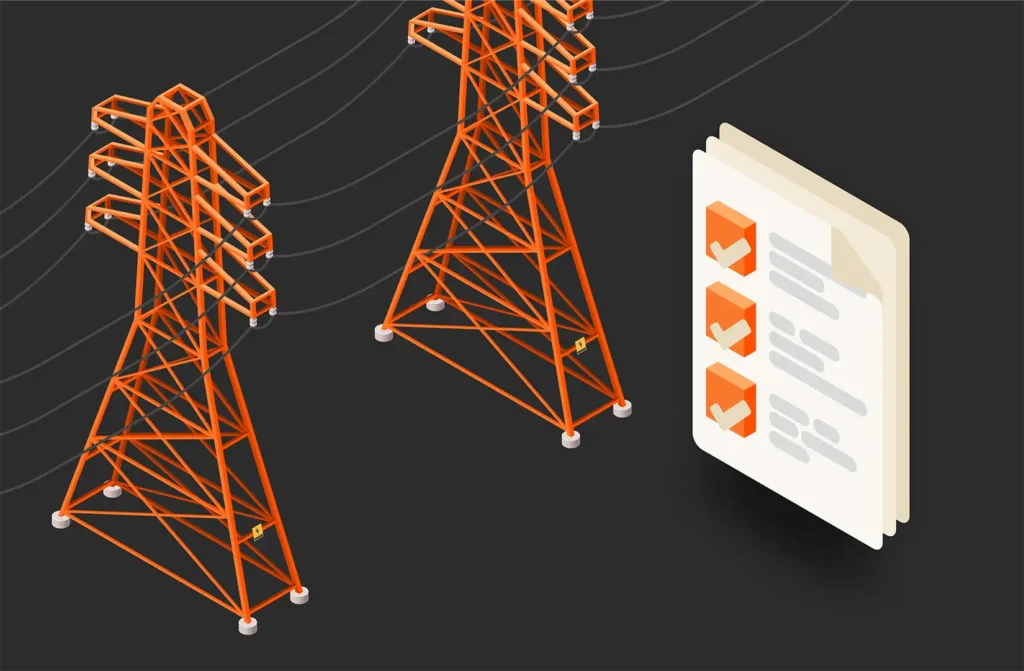Data processing systems come in many shapes, types, and sizes, and with good reason: Data challenges are diverse and distinct. Two systems to know are OLAP and OLTP, each designed to tackle unique data challenges. This article will explore these systems and dig into their key differences and complexities.
What Is a Database System?
A database system is a structured and organized collection of data that consists of a database and a database management system (DBMS). These systems provide a systematic way to store, organize, and access information, allowing users to efficiently interact with and manipulate data for various purposes, such as analysis, reporting, and application development.
Think of it as a digital librarian managing a vast collection of information, ensuring quick access and efficient organization.
The Components of a Database System
A database system comprises three key components:
- Data
- The database management system (DBMS)—which serves as the software interface that facilitates the creation, storage, retrieval, and management of data
- Users or applications—what interacts with the system to input, retrieve, and manipulate data, utilizing the DBMS
Imagine a library where books, magazines, and newspapers (data) are neatly arranged on shelves (storage), with a cataloging system (database management system) that facilitates easy retrieval by the library staff (users). This is how the components of a database system work in harmony.
Different Types of Data Processing Systems: OLAP and OLTP
Database systems can also be categorized by how they process data. Two common data processing systems include OLAP (online analytical processing) and OLTP (online transaction processing). They have distinct roles in how they handle data and different purposes and benefits for users. Let’s dig in deeper.
What Is OLTP?
OLTP stands for online transaction processing. As we mentioned above, OLTP is a type of data processing system. It’s designed for managing and processing high-volume, real-time transactions. Its emphasis is on fast response times, data integrity, and day-to-day operations, such as:
- Online banking transactions
- E-commerce purchases
- Airline reservations
OLTP works by efficiently processing and managing short, frequent, and real-time transactions, ensuring rapid data input and retrieval, maintaining data integrity and supporting the operational needs of businesses.
What Are Transactions in a Data System?
In the context of a data system, a transaction refers to a sequence of one or more operations that are executed as a single unit. These operations can involve reading from or writing to a database.
Why Do OLTP Systems Have Fast Response Times?
OLTP systems were designed to prioritize quick response times, ensuring that transactions are processed swiftly and accurately. To better explain how they were designed for speed, let’s use the analogy of a fast-food restaurant.
An analogy: Imagine an OLTP system as a drive-through. Transactions are like customer orders, and they need to be swift—like customers quickly placing orders at a drive-through. Then, there’s volume. OLTP systems handle a high volume of transactions concurrently, just like a fast-food restaurant is preparing and serving meals to multiple customers. They’re both optimized for speed, not complexity. Just as a drive-through menu focuses on items that can be prepared rapidly, OLTP focuses on fast and straightforward transactions.
What Is OLAP?
OLAP stands for online analytical processing. As mentioned above, OLAP is a type of data processing system that’s focused on analyzing and extracting insights from large volumes of multidimensional data. OLAP is all about slicing, dicing, and analyzing data to uncover valuable information, such as:
- A retail organization examining trends, patterns, and insights from sales data
- An enterprise enabling complex queries and aggregations for strategic decision-making
- A healthcare organization analyzing patient outcomes, medical expenses, and the effectiveness of medical treatments to optimize hospital resource usage
OLAP works by organizing and processing multidimensional data cubes, allowing users to analyze and gain insights through flexible querying, slicing, dicing, and pivoting operations for strategic decision-making and data exploration. It excels in analytical processing, which involves investigating data relationships, trends, and anomalies. This detective work helps professionals draw valuable conclusions.
What Is Analytical Processing in a Data System?
Analytical processing in a data system refers to the exploration, examination, and interpretation of data to uncover meaningful insights, trends, and patterns. It involves the systematic analysis of data to gain deeper information, facilitate informed decision-making, and support strategic planning.
Analytical processing is a key component of OLAP systems, which are designed to enable complex and interactive analysis of large data sets.
What Are the Main Types of OLAP?
Think of OLAP types as various lenses a photographer might use to capture different snapshots from different perspectives:
ROLAP (Relational OLAP): A Zoomed-in View
ROLAP systems store data in relational databases, utilizing standard relational database management systems (RDBMS).
MOLAP (Multidimensional OLAP): A Broader Panorama
MOLAP systems store data in multidimensional databases, optimized for handling data along multiple dimensions. Data is stored in cubes, providing fast query performance.
HOLAP (Hybrid OLAP): A Blend of Both
HOLAP combines elements of both ROLAP and MOLAP systems, providing a hybrid approach. HOLAP systems may use a mix of relational and multidimensional storage, allowing for flexibility.
DOLAP (Desktop OLAP):
DOLAP systems are designed for individual desktop or personal use, with data stored on the user’s local machine.
WOLAP (Web OLAP):
WOLAP refers to OLAP systems that are accessible over the web, allowing users to perform analysis through a web interface.
Do All OLAP Systems Have a Denormalized Data Structure?
While denormalized data structures are common in many OLAP systems, not all OLAP systems exclusively use denormalized structures. OLAP systems can and do employ different approaches based on their design and requirements, query complexity, and performance requirements.
OLAP can utilize a hybrid of both to simplify and expedite complex analytical queries. Microsoft SQL Server Analysis Services (SSAS) and Oracle OLAP are examples of cube-based OLAP systems.
OLTP vs. OLAP
Now, let’s dive deeper into their differences.
While OLAP and OLTP play different roles, they share the common goal of managing data effectively, such as:
- Reliance on a DBMS: Both OLAP and OLTP systems rely on a DBMS to interact with and manage the underlying data.
- Relational database principles: Both OLAP and OLTP systems often adhere to relational database concepts, including tables, rows, and columns.
Key Differences between OLAP and OLTP
Think of OLAP as an investigative journalist exploring the why and how, while OLTP is the real-time reporter focused on the who, what, and when.
Examples of OLAP uncovering the “why”: Data warehousing applications, business intelligence tools, and systems that support executive decision-making
Examples of OLTP and the “what”: Online banking systems, airline reservation systems, and e-commerce platforms where real-time transaction processing is critical
Other key differences between OLAP and OLTP lie in their primary objectives, usage patterns, and the way they handle data:
| OLAP | OLTP | |
| Purpose | Complex queries and data analysis To provide insights, support decision-making, and facilitate strategic planning | Transaction management and the efficient processing of routine, day-to-day transactions To maintain data integrity and support operational tasks |
| Usage Pattern | Involves read-heavy operations, where large sets of historical data are analyzed to identify trends, patterns, and relationships | Write-heavy operations, handling a high volume of concurrent transactions in real time |
| Data Structure | Denormalized or star-schema structure to simplify complex queries | Normalized data structure to minimize redundancy and ensure data consistency |
| Optimization | Emphasis is on query performance and flexibility, allowing for efficient analysis of multidimensional data. | Fast and accurate transaction processing, with a structure that minimizes data redundancy |
| Transaction Types | Complex, ad-hoc queries that aggregate and analyze data across various dimensions. Transactions are typically batch-oriented, and the emphasis is on the efficiency of analytical processing. | Short, atomic transactions that involve inserting, updating, or deleting small amounts of data. The emphasis is on maintaining the consistency of the database in real time. |
| User | Data analysts, business intelligence professionals, and decision-makers who require in-depth analysis and reporting capabilities | Front-end applications and end users engaged in day-to-day operations |
| Response Time | Comprehensive > Fast OLAP queries may have a longer response time due to the complexity of the analytical processing involved. Users expect comprehensive results rather than immediate responses. | Fast > Comprehensive OLTP systems prioritize fast response times to ensure quick transaction processing. Users expect immediate confirmation of their transactions. |
Which Is Faster? OLAP vs. OLTP
OLTP is the faster data processing system, by design. It’s meant to provide quick transactions versus in-depth analysis.
Conclusion
OLAP and OLTP are like skilled performers in a symphony, working together to create a seamless experience for data professionals, ensuring the efficient management and analysis of information in our digital world. Looking for an all flash data storage that is fast and efficient enough to keep up with the most demanding OLAP and OLTP workloads? FlashArray has the high performing and low latency storage capabilities needed to maintain the exceptional response times for OLTP and OLAP workloads.
Written By:
Test Drive FlashArray
Pure is redefining the storage experience and empowering innovators by simplifying how people consume and interact with data.









